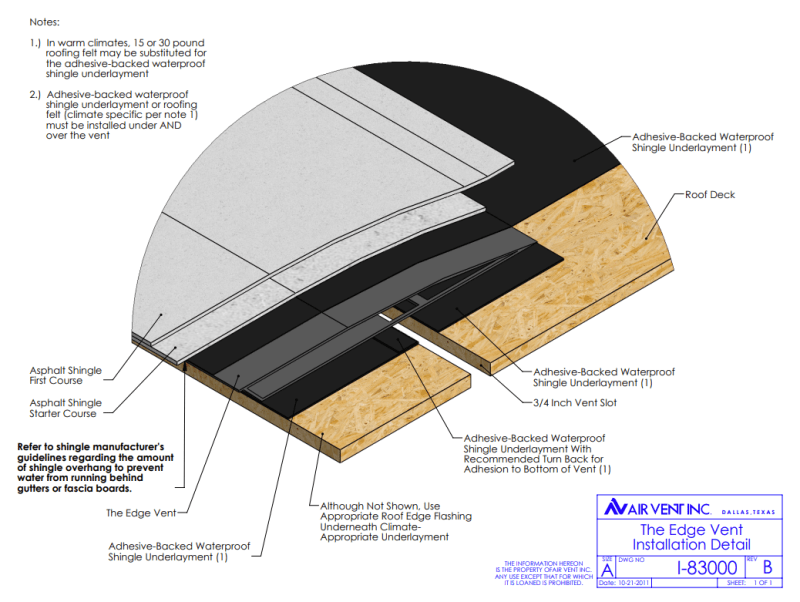I'm working on a renovation project for an existing wood framed building with plywood sheathed, hipped roofs throughout. The architect wants to improve the attic ventilation by having the roofing contractor install continuous "shingle over" style ventilation just inboard of the exterior walls. These vents require cutting a continuous 3/4" strip out of the roof sheathing. The image below is the vent manufacturer's standard detail.

This seems like a horrible idea to me and would result in a complete loss of roof diaphragm strength for the existing building. The architect's question at this point is "how much can I cut out around the perimeter?" To which my quick response would be no more than 10% of the perimeter length of the diaphragm (following the IEBC's 10% increase in lateral forces methodology).
Anybody have any input on whether this is as horrible an idea as I think it is?
Thanks,
Erik

This seems like a horrible idea to me and would result in a complete loss of roof diaphragm strength for the existing building. The architect's question at this point is "how much can I cut out around the perimeter?" To which my quick response would be no more than 10% of the perimeter length of the diaphragm (following the IEBC's 10% increase in lateral forces methodology).
Anybody have any input on whether this is as horrible an idea as I think it is?
Thanks,
Erik
